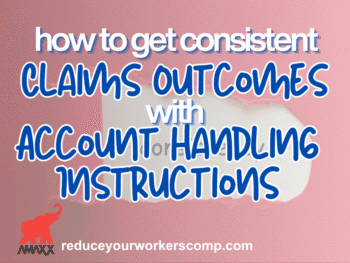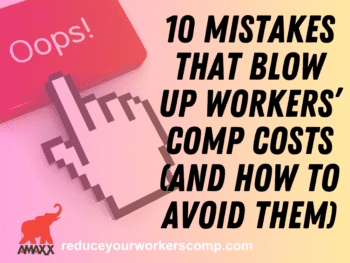Many times employers have specific questions needing answers. Here’s one we fielded recently.
An Employer Asks:
Dear Bob,
I am a supervisor in a manufacturing plant, but we also have retail outlets located throughout the country. Last month, an employee was injured on one of the milling machines and everyone panicked. No one knew what to do. Eventually someone had the sense to call medical, but by then a half hour had passed.
Recently, I read somewhere about a set of post injury response procedures you developed for a service industry and was wondering if these would also apply to manufacturing or retail?.
This incident cost our company thousands of dollars in lost of production, and it’s been six weeks and the injured employee is still out on workers’ comp and our department is going to be charged back for this! What do I do now?
Bob Answers:
Dear Manufacturing,
Yes, most assuredly a Post Injury Response Procedure can be adapted to any work environment. A post-injury response procedure is basically a common sense approach to training employees in how to respond in an emergency. There are roles that each group of individuals must play and these include the supervisor’s responsibilities, the witnesses and finally the injured employee also must know how to react when injured on the job.
You should sit down and develop post injury response procedures as soon as possible, and then you should provide in-service training to employees, witnesses, supervisors, and human resources or medical department to the extent in which they are involved. Checklists should be developed to choreograph for each role/responsibility so nothing is forgotten. Then, if and when a work related incident occurs, every one will be prepared to execute their respective roles.
For example, if an employee is injured, his/her first responsibility is to notify his/her immediate supervisor. If the injured worker is unable to do so, then a witness must notify the supervisor immediately. THEN —
1. The supervisor goes immediately to the site, assesses the extent of the injury and the employee’s need for medical attention.
2. If the employee requires medical services, then the supervisor must follow organizational procedures for obtaining emergency services (ambulance, EMT, etc.) The supervisor must remain with the injured employee until he is in the hands of medical professionals and is satisfied that the injured employee is being adequately cared for.
3. At the same time, the supervisor and witnesses must complete a written statement, and as soon as possible and the injured employee must complete a written statement detailing the circumstances surrounding the incident.
4. Finally, the supervisor must leave a workability form with the treating professionals with the instructions that the diagnosis and prognosis sections be completed and faxed back to the worksite by close of business that day, so that a transitional duty strategy can be formulated immediately.
If your management sees you taking proactive action to regulate post injury response procedures in the event of future incidents, they may temper their charge backs this year with some positive reinforcement next year. (workersxzcompxzkit)
Author Robert Elliott can be contacted at: Robert_Elliott@ReduceYourWorkersComp.com or 860-553-6604.
“FRAUD PREVENTION” PODCAST click here: http://www.workerscompkit.com/gallagher/mp3
By: Private investigator with 25 years experience.
TD Calculator: www.ReduceYourWorkersComp.com/transitional-duty-cost-calculator.php
WC Calculator: http://www.reduceyourworkerscomp.com/calculator.php
Do not use this information without independent verification. All state laws vary. You should consult with your insurance broker or agent about workers’ comp issues.
©2009 Amaxx Risk Solutions, Inc. All rights reserved under International Copyright Law. If you would like permission to reprint this material, contact Info@WorkersCompKit.com













